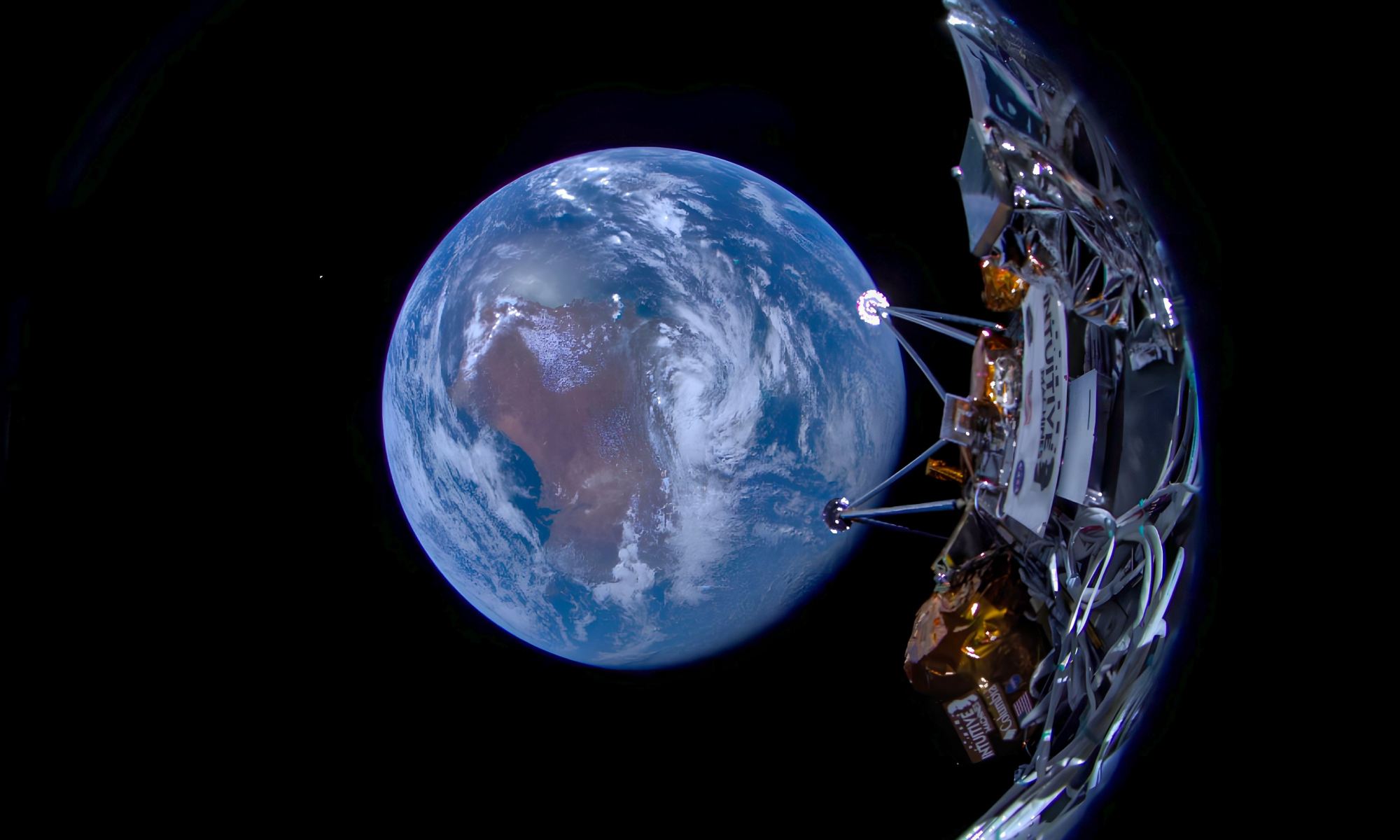Intuitive Machines’ Odysseus lander has beamed back a series of snapshots that were captured as it headed out from the Earth toward the moon, and one of the pictures features Australia front and center. The shots also show the second stage of the SpaceX Falcon 9 rocket that launched the spacecraft, floating away as Odysseus pushed onward.
The pictures were taken on Feb. 16, the day of the launch.
“Payload integration managers programmed the lander’s wide and narrow field-of-view cameras to take five quick images every five minutes for two hours, starting 100 seconds after separating from SpaceX’s second stage,” Houston-based Intuitive Machines explained in a posting to X / Twitter. “Out of all the images collected, Intuitive Machines chose to show humanity’s place in the universe with four wonderful images we hope to inspire the next generation of risk-takers.”
If Intuitive Machines’ IM-1 mission is successful, Odysseus is due to become the first commercial spacecraft to make a soft landing on the moon, and the first U.S. spacecraft to do so since NASA’s Apollo 17 crewed mission in 1972.
The lander, which is about the size of an old-fashioned telephone booth, is carrying six science payloads for NASA, plus six commercial payloads — including a miniaturized camera system that would be dropped off just before landing to record the touchdown.
Odysseus is scheduled to reach lunar orbit on Feb. 21 and descend to a spot near Malapert A crater in the lunar south polar region on the 22nd. The mission’s objective is to test out spacecraft systems and assess the environment around the moon’s south pole, in advance of a crewed landing that could take place as early as 2026.
Assuming all goes well, Intuitive Machines is in line to receive $118 million from NASA through the Commercial Lunar Payload Services program, which was created to take advantage of private-sector innovation and reduce NASA’s costs.
In a Feb. 18 mission update, Intuitive Machines reported that Odysseus “continues to be in excellent health, and flight controllers are preparing planned trajectory correction maneuvers to prepare the lander for lunar orbit insertion.”
Success isn’t guaranteed: Just last month, a NASA-supported commercial lander built by Astrobotic fell back to Earth after missing its chance to make a moon landing due to a propellant leak. Over the past few years, other robotic moon landing missions planned by Israel’s SpaceIL team, Japan’s iSpace and the Russian Space Agency have also ended in failure.
That being said, failure isn’t inevitable: In the past year, India and the Japan Aerospace Exploration Agency have successfully put landers on the lunar surface to send back science data.
If Odysseus survives its landing attempt, Intuitive Machines expects the solar-powered robot to be in operation for seven days. The mission is expected to end when the sun sinks below the lunar horizon.

